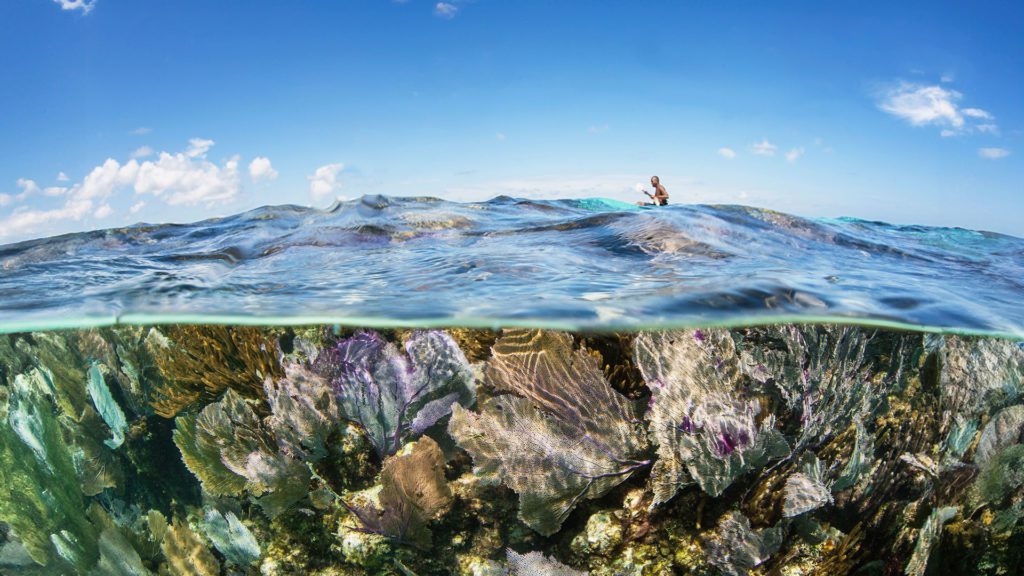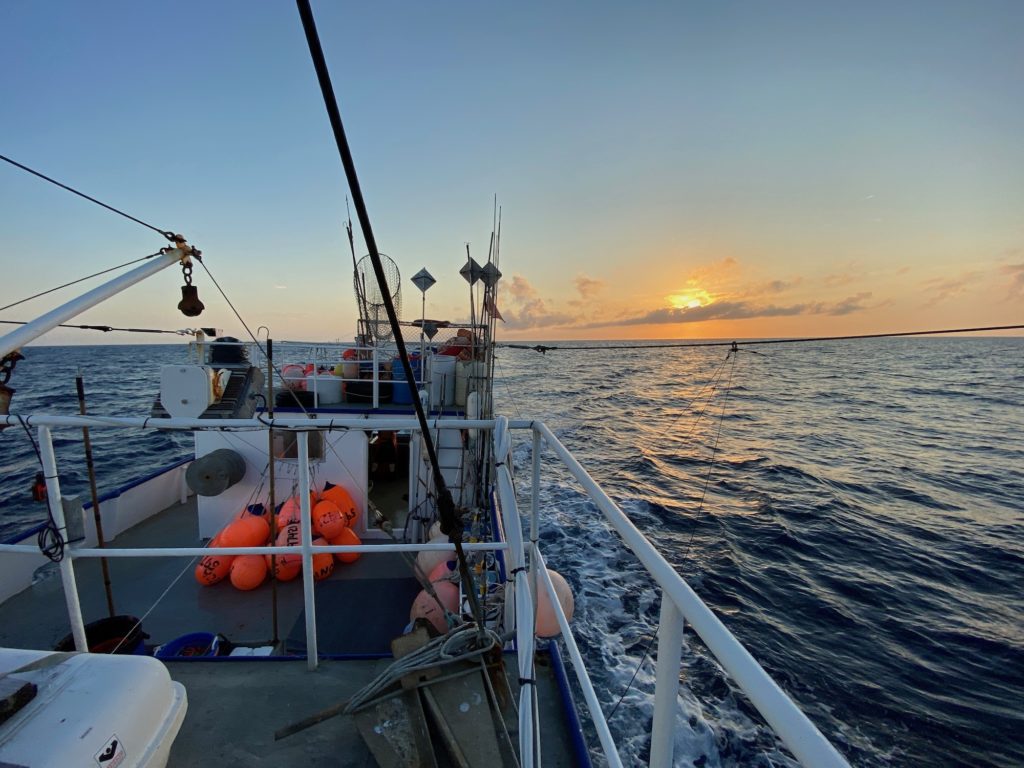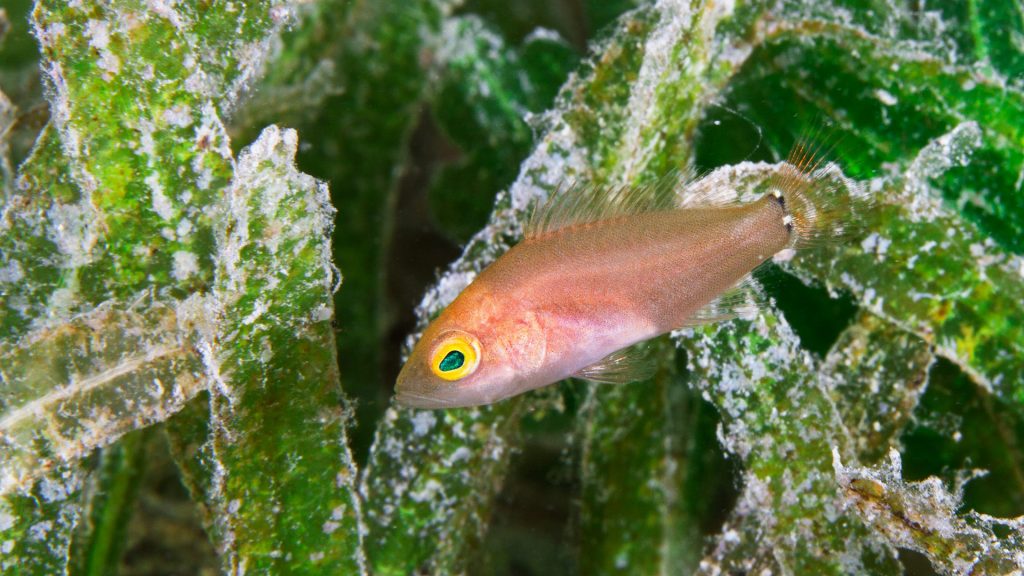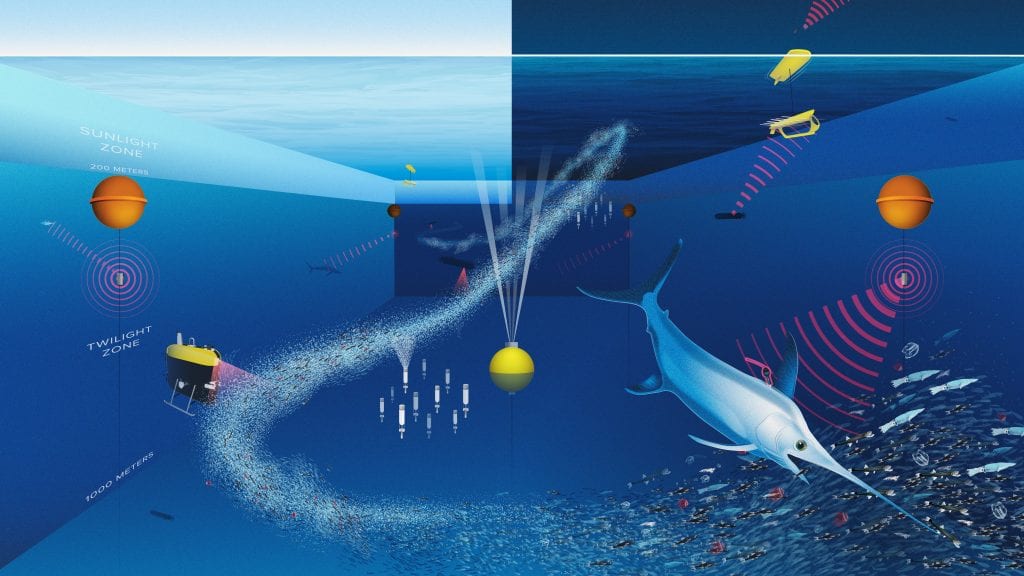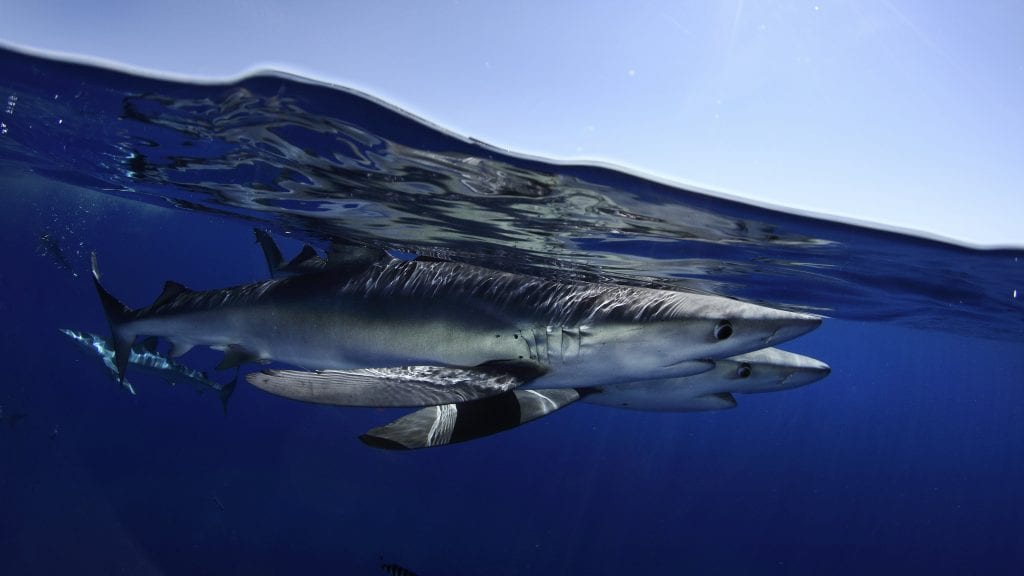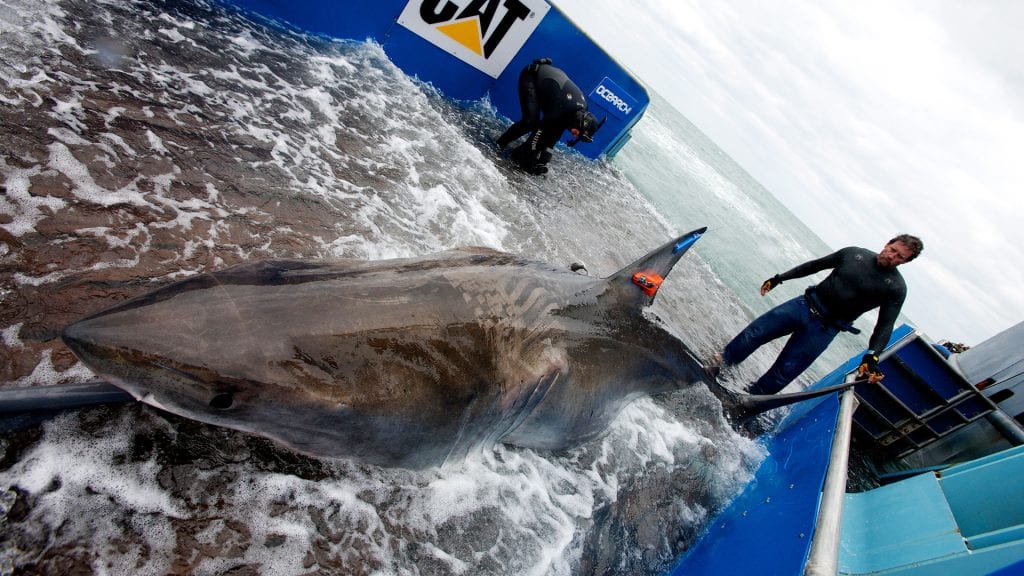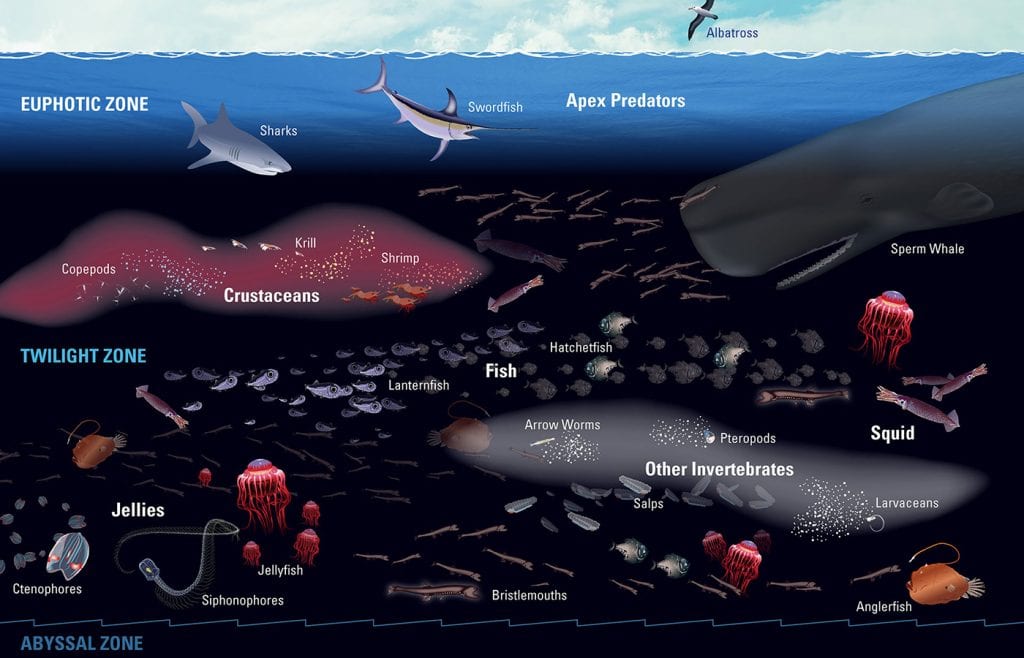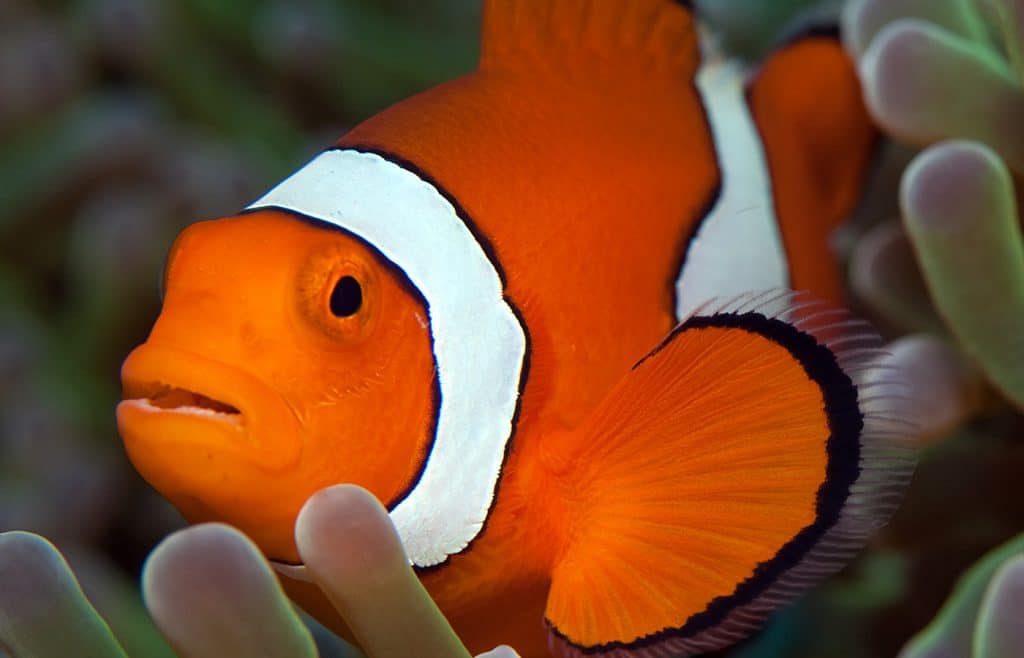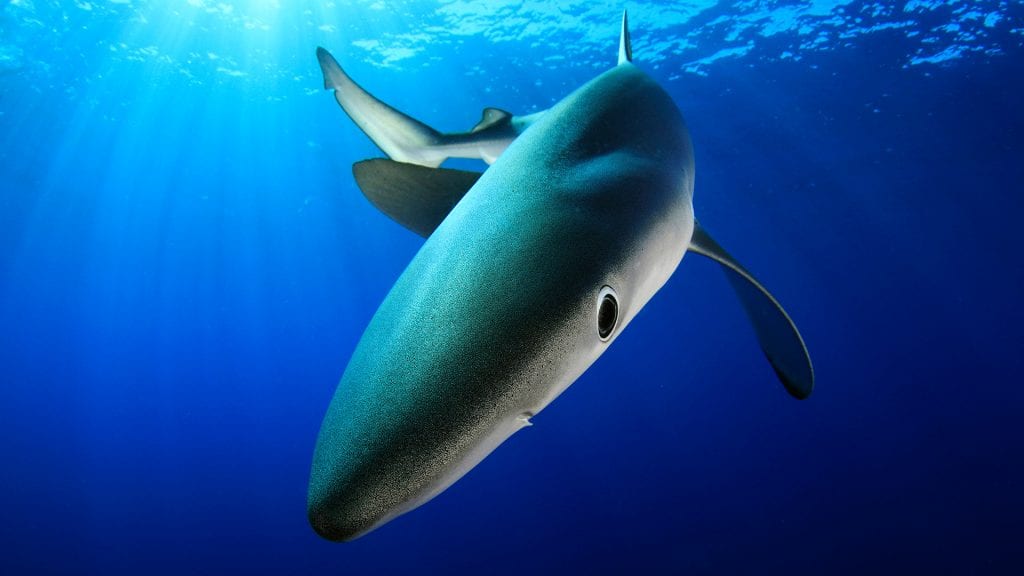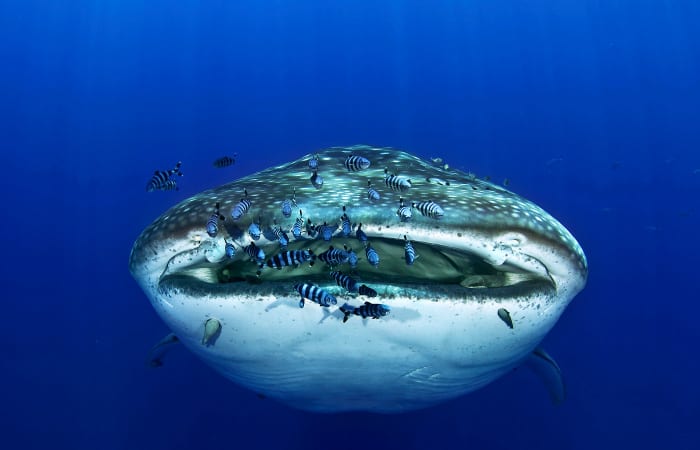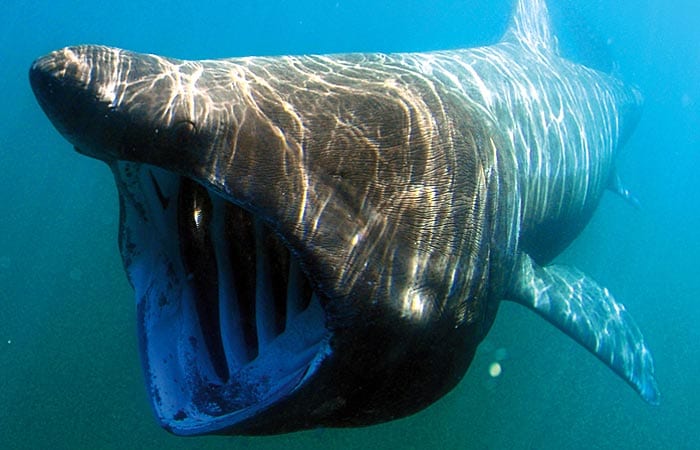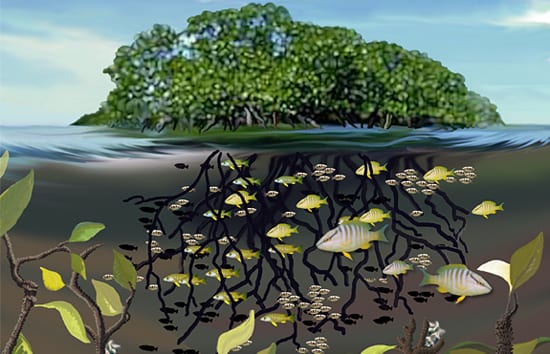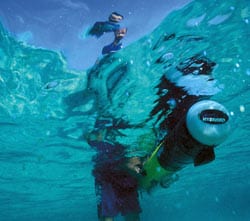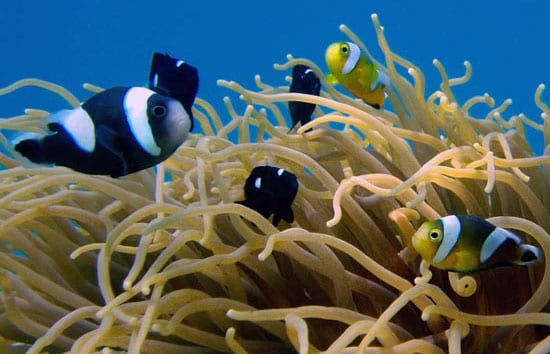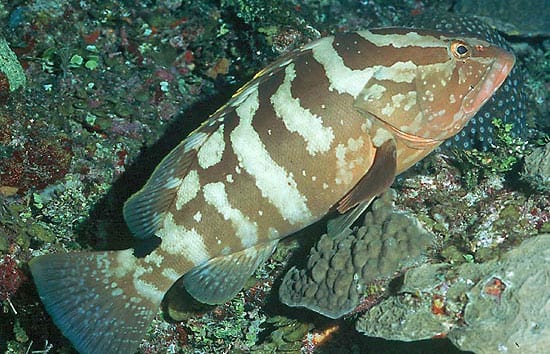Simon Thorrold
Refine by
Date
Topic:
Article Type
Special Series
Author
Counting on Corals
As struggling reefs put a squeeze on Belize’s Blue Economy, could heat-tolerant corals be the answer?
Casting a (long) line to the twilight zone food web
Scientists and fishermen work together to study key predators in the ocean twilight zone
Tracking dispersal of baby fish for better reef conservation
To improve marine protected areas, WHOI scientists study the traffic patterns of juvenile reef fish
In the Ocean Twilight Zone, Life Remains a Mystery
A New, Long-term Observation Network Could Help Reveal Its Secrets
A tunnel to the Twilight Zone
Scientists track hungry blue sharks as they ride swirling currents down to the ocean twilight zone—a layer of the ocean containing the largest fish biomass on Earth
Sharks Take ‘Tunnels’ into the Depths
By tagging sharks, WHOI scientists have revealed their surprising behavior.
Mission to the Ocean Twilight Zone
The twilight zone is a part of the ocean 660 to 3,300 feet below the surface, where little sunlight can reach. It is deep and dark and cold, and the pressures there are enormous. Despite these challenging conditions, the twilight zone teems with life that helps support the ocean’s food web and is intertwined with Earth’s climate. Some countries are gearing up to exploit twilight zone fisheries, with unknown impacts for marine ecosystems and global climate. Scientists and engineers at Woods Hole Oceanographic Institution are poised to explore and investigate this hidden frontier.
The Marine Reserve Goldilocks Problem
To protect coral reefs, governments and conservationists are looking to establish networks of marine reserves, where fishing is prohibited. But for the reserves to work, they need to be the right size and distance apart […]
Shark Tales
Sharks are some of the largest fish in the ocean, but their movements and behavior have remained largely hidden from people.
An Ocean That’s No Longer Wild
Like most fathers, Simon Thorrold plays tag with his young daughter. But Thorrold, a biologist at Woods Hole Oceanographic Institution, also plays tag with 30-foot-long whale sharks, like the one above that’s looking straight at […]
Why Haven’t the Cod Come Back?
A WHOI biologist is analyzing fish scales dating back to the 1930s to unravel changes in the ecosystem of Georges Bank, one the world’s most productive fisheries.
Clues in Shark Vertebrae Reveal Where They’ve Been
It’s 1963. The escalating arms race and the horrific power of nuclear bombs cause world leaders to sign the Limited Test Ban Treaty, prohibiting weapons testing in the atmosphere and in the ocean.
Fast-forward 49 years. […]
Willy Goldsmith
Willy Goldsmith is a fish guy. At home in Boston and Gloucester, Mass., he is an avid lifelong fisherman. He also works in the ichthyology collections at Harvard University, where he is a senior majoring […]
One Man’s Swamp Is a Fish’s Nursery
A parade of schoolmaster snapper swims by me, their neon yellow fins directing traffic. Echoing in the background is the rhythmic crunch of striped parrotfish nibbling on coral polyps. I’m chasing brightly colored coral reef […]
Finding Nemo…and Other Endangered Fish
A novel method to track fish larvae?using tetracycline to tag otoliths, or ear bones?sheds lights on which marine areas to protect
Tracking Fish to Save Them
For decades, the Nassau grouper (Epinephelus striatus) was one of the most sought-after fish species in the Caribbean and Gulf of Mexico, from the Bahamas to Central America. These large, delicious fish live among coral reefs and have a breeding behavior that makes them especially vulnerable. They come together in aggregations of thousands to spawn at specific times and places, making them easy to catch—and to overfish.

